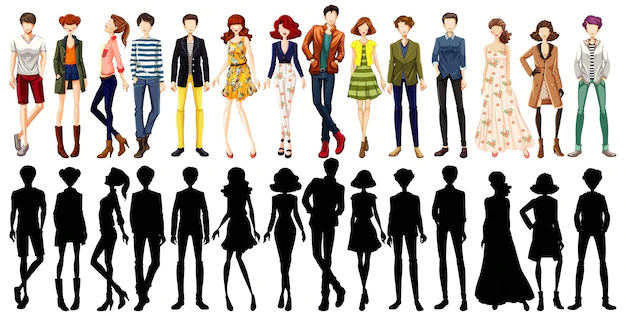Flattering Swimsuit Selection: A Body-Positive Approach
The pursuit of the perfect swimsuit transcends mere fashion; it's about achieving a harmonious blend of comfort, confidence, and self-expression. This comprehensive guide presents a strategic framework for swimsuit selection, incorporating body-positive principles and leveraging established theories of visual perception and body image to empower individuals to choose swimwear that accentuates their unique physique and enhances their overall well-being. We will explore fifteen key considerations to guide your selection process and foster a positive body image.
Somatotyping and Swimsuit Selection: A Personalized Approach
Understanding one's body type, a concept rooted in somatotyping (Sheldon's constitutional psychology), is paramount. Common body types include ectomorph (slender), mesomorph (athletic), and endomorph (curvier). However, a more nuanced approach considers variations and combinations of these types. Accurate self-assessment, possibly aided by online body type quizzes or consultations with a stylist, facilitates informed decision-making. This personalized approach ensures that swimsuit selection aligns with individual body proportions, maximizing flattering aesthetics.
Strategic Design Elements: Optimizing Visual Perception
Swimsuit selection should leverage principles of visual perception to create a balanced silhouette. For instance, the Gestalt principles of proximity and similarity can be applied: strategically placed patterns or embellishments can draw attention to desirable features while minimizing perceived flaws. Darker colors create a slimming effect (as supported by research on color psychology), while brighter colors or bold prints highlight specific areas. Vertical lines elongate the body, while horizontal lines create the illusion of width. These techniques help to create a visually harmonious and flattering effect.
The Role of Support, Fit, and Comfort in Body Confidence
Fit and support are crucial for both physical comfort and psychological well-being. Proper support, especially for larger busts, is essential. Consider swimsuits with underwire, adjustable straps, or built-in cups to provide adequate support and prevent discomfort. A well-fitting swimsuit should be neither too tight nor too loose, as both extremes can detract from comfort and visual appeal. This aligns with the self-perception theory which emphasizes the importance of bodily sensations in self-esteem and confidence.
Swimsuit Styles and Their Body-Flattering Applications
A diverse range of swimsuit styles caters to various body types and preferences. One-piece swimsuits, with their inherent versatility, can be styled with cutouts or high-cut legs to highlight specific features. Two-piece swimsuits offer flexibility in mixing and matching tops and bottoms, allowing for personalized adjustments. High-waisted bottoms can offer abdominal support, while swim dresses provide additional coverage and a sophisticated silhouette. The choice should consider the individual’s comfort level and desired level of coverage.
Color Psychology and Pattern Selection: A Visual Strategy
Color psychology plays a crucial role in shaping visual perception. Darker shades, like navy or black, generally create a slimming effect, while lighter colors can accentuate certain areas. Patterns, too, influence perception. Vertical stripes create a lengthening effect, whereas horizontal stripes can add width. The strategic use of color and pattern allows for skillful manipulation of visual perception to enhance the overall aesthetic effect.
Accessorizing for Enhanced Silhouette and Confidence
Accessories such as sarongs or cover-ups offer versatility and provide additional coverage, enhancing comfort and confidence. These items allow for personalization and can transform the overall look, adding a touch of elegance and sophistication. Their use aligns with the concept of self-presentation, allowing individuals to curate their image and express their personal style.
The Importance of In-Person Fittings and Professional Guidance
Swimsuit sizing varies across brands and styles, making in-store fittings essential. Trying on different styles and sizes allows for the identification of the most flattering and comfortable fit. Consulting a sales associate with expertise in body types and swimwear styles can provide valuable insights and accelerate the selection process. This aligns with the principle of consumer behavior that emphasizes the role of experience and personalized recommendations in making purchase decisions.
Body Positivity and Self-Acceptance: The Ultimate Accessory
Ultimately, confidence is the most flattering accessory. Embracing body positivity, a social movement promoting self-acceptance, is vital for fostering a positive self-image. Recognizing that beauty encompasses diverse shapes and sizes empowers individuals to celebrate their unique attributes and wear their swimwear with pride. This is in line with the self-efficacy theory, indicating a strong correlation between self-belief and positive self-perception.
Conclusion and Recommendations
In conclusion, selecting a flattering swimsuit involves a multifaceted process that considers individual body type, strategic design elements, and the power of color and pattern. Prioritizing comfort, fit, and support is essential for both physical and psychological well-being. By incorporating principles of visual perception and body-positive strategies, individuals can make informed choices that enhance their self-image and confidence. Further research could explore the effectiveness of different swimsuit design elements on body image perception and the impact of social media on swimsuit selection choices.We recommend adopting a holistic approach, considering both the physical and psychological aspects of swimsuit selection. This includes a thorough understanding of one's body type, informed use of visual perception principles, and a commitment to self-acceptance and body positivity. The impact of this approach is a significant enhancement in both self-esteem and overall satisfaction with one's appearance. The applicability of this framework extends beyond swimsuit selection to broader aspects of fashion and personal style.
Reader Pool: What are your thoughts on the interplay between body image, personal style, and the selection of clothing items such as swimsuits, and how does this influence overall self-confidence?


